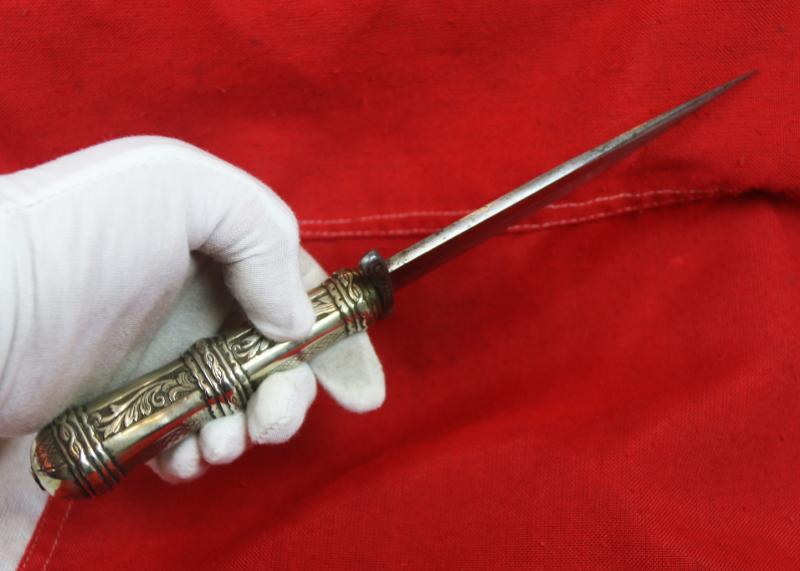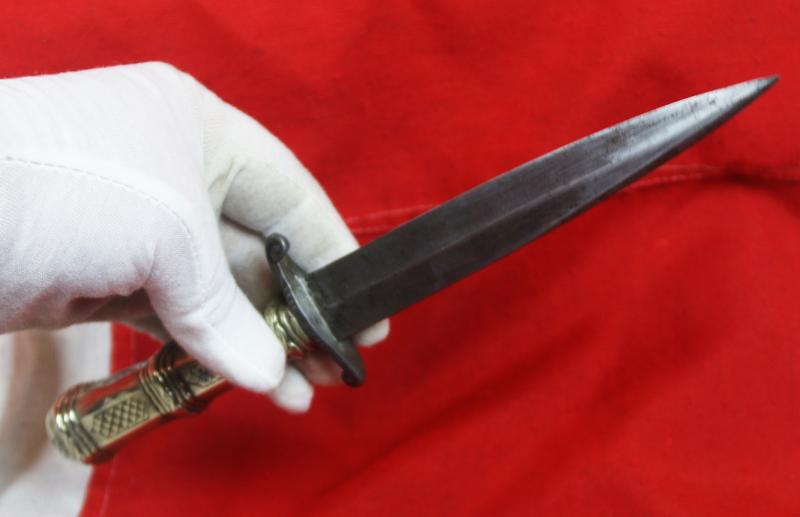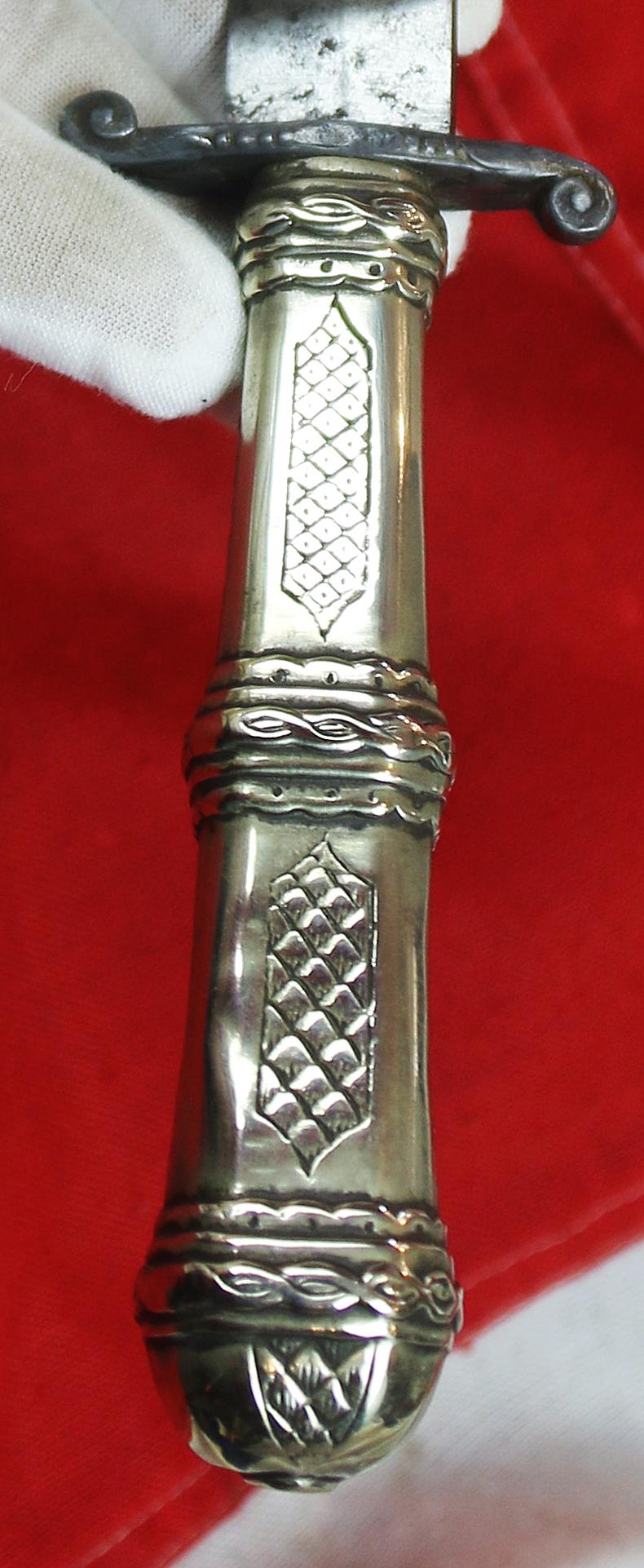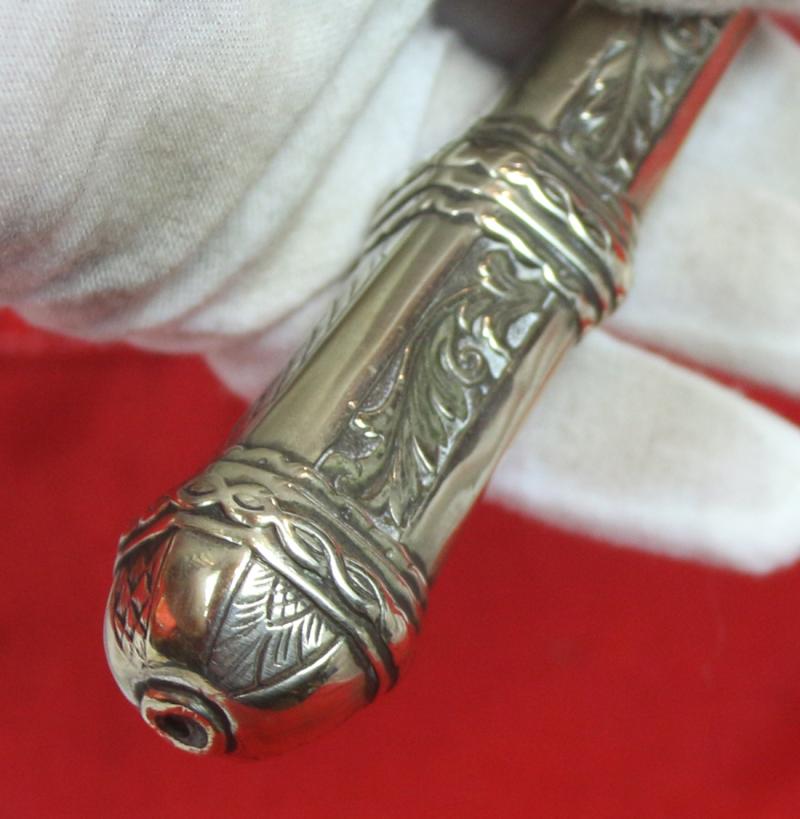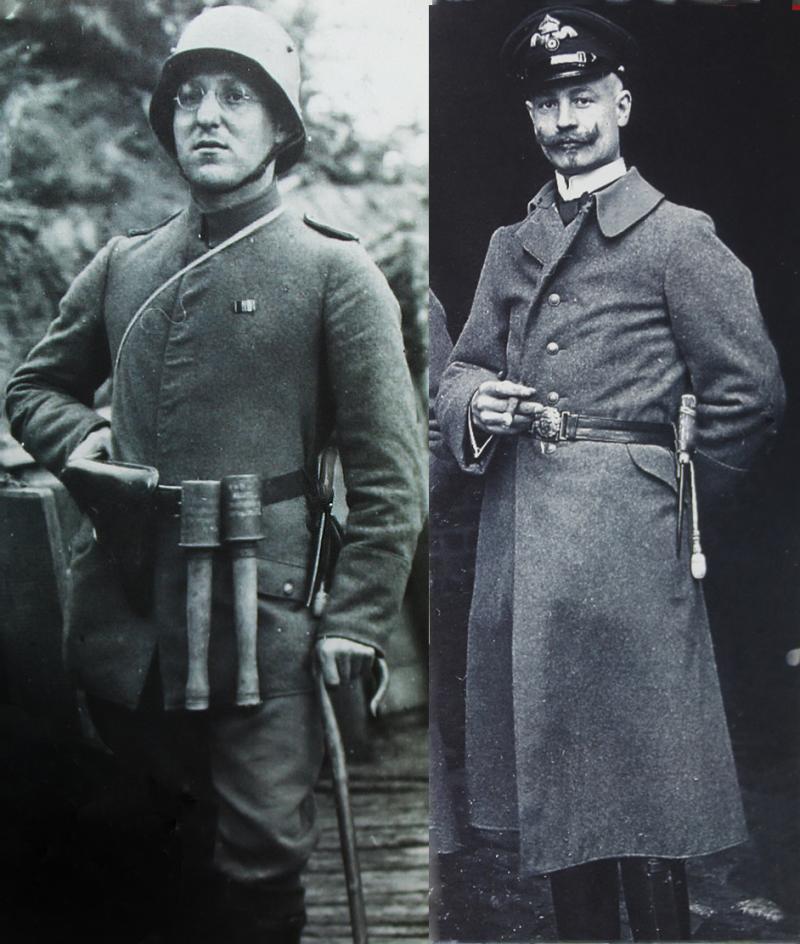A Superb WW1 German Officer's Trench Dagger Close Combat Fighting Knife
Very fine, bespoke, classical Renaissance style foursided hilt, with domed pommel serpentine borders, acanthus leaf engraving and scale and diced engraved panels, scroll quillons. Typical, single edged, German boot knife form blade, with steel scabbard and canvas hessian belt loop.
This is one of the nicest, and best quality WW1 officer's trench daggers we have seen in over 40 years. Way above the quality of the standard wooden hilted infantryman's issue type.
If Baron von Richthofen wore a trench knife, this is what it may have looked like.
We show in the gallery a copy of two original photographs of German officers both armed with the same type of daggers upon their waist belts. One an army officer, the other a naval officer, possibly a Reichmarine naval bi-plane aircraft pilot
Germany was probably the first of the countries involved in WWI to provide more than just bare-bones hand-to-hand combat training to their troops. After Japan’s victory in the Russo-Japanese War of 1904-1905, interest in the Japanese martial art of jiu jitsu soared in the West, particularly in Germany. They trained a number of their conscripted troops in jiu jitsu, but the practice was not widespread.
Unarmed combat skills could only really be used if both fighters in an encounter somehow dropped their weapons, which did occasionally happen, but generally the outcome of close quarters fighting in the trenches would be decided by who had the most effective close-quarters weaponry – and how effectively they wielded said weapons.
This meant that all of the forces involved in the war began to equip those groups of men who would likely be involved in close-quarters trench fighting with weapons that would be effective in such situations
By 1915 trench raids, often conducted under cover of darkness, had become a regular occurrence in the war. The conditions in which the raiders knew they would be fighting necessitated the use of weapons that were far more suitable to close combat than rifles and bayonet
While rifle bayonets were standard-issue items for almost every enlisted soldier who fought in the First World War, regardless of which army he was fighting for, it soon became apparent that these weapons were not ideal for close quarters combat in the cramped conditions of enemy trenches, thus the Germans were the first to realise that trench knives were essential for hand to hand combat.
Code: 24821
575.00 GBP



